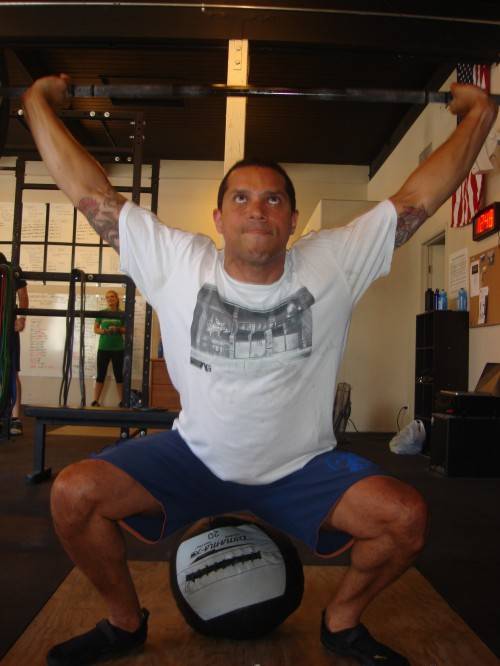What do physical fitness and personal security have to do with one other? Well, according to Miguel DeCoste, a personal safety and threat assessement specialist, they have a lot to do with each other.
Miguel DeCoste is a long-time resident of Santa Barbara, CA, and during his time there, he has developed expertise in making it a safer place. As a Certified Protection Professional, Miguel consults with nightclubs and other establishments, works with administrators on city-sponsored events, and provides services to individuals related to assessing and mitigating safety threats. He is the owner and lead consultant of Coast Executive Services, a company that specializes in security consulting and executive protection.
Miguel came to the personal safety and threat assessment field “in a very roundabout fashion.” He had worked as a bouncer for extra income in a previous life, but his “real” jobs had always included a project management component. Upon the advice of a martial arts instructor, he explored the possibility of becoming a bodyguard. When he found that the job entailed “not only the physical aspect, but a lot of research, planning, and coordination, (he) realized that it would be a great fit for (his) personality and skill set.” Always possessed of a somewhat protective bent, Miguel strongly believes “that individuals have the right to live safe, happy lives, free from fear.”
When Miguel is working a job such as providing security for a celebrity at a film festival, “the planning usually begins far in advance and varies from individual to individual. It includes contacting clients and their representatives, event staff, coordinating pick up/drop off, seating, transportation. On the job itself, you are dealing mostly with being close to an individual and watching what is going on around them.” Much of the work on this type of job involves going wherever the client goes. If the client goes to the beach, to a restaurant, or the like, Miguel goes too. There may also be coordination with agents who are part of an advance team, securing a location before the client arrives.
Nightclub consultations, on the other hand, are quite different, Miguel notes. In these situations, more staff training and staff and patron observation take place. Staff members are admonished to go through their checklists, position themselves properly, and deal with patrons correctly. And, of course, the alcohol factor must be addressed, which Miguel does with patience and empathy. “If you can try and see things from (the intoxicated person’s) point of view, it often helps to guide them towards the decision that you are making for them, i.e. it’s time to go home now. At a certain point, however, it is time to become the adult in the room and make them understand that they are indeed going to listen to you and what you say.”
On the topic of what individuals can do to maximize their personal safety, Miguel notes that it is much easier than the public might believe. “First and foremost, people just need to pay attention to their environment. Am I parking in the darkest corner of the parking lot or under a streetlamp? Do I walk home alone after a night out or do I ask a friend to accompany me?” Miguel asks. “If common sense dictates that you should act a certain way, you should listen to common sense. Gavin deBecker’s The Gift of Fear is a book everyone should read.”
 Miguel believes fitness is vital to increased personal safety. “The first rule in any situation involving physical danger is ‘Escape!’ If you can run…run! If you can out run your attacker, even for 50-100 yards, you place yourself at a huge advantage.” And the best way to do this is to possess some measure of physical fitness.
Miguel believes fitness is vital to increased personal safety. “The first rule in any situation involving physical danger is ‘Escape!’ If you can run…run! If you can out run your attacker, even for 50-100 yards, you place yourself at a huge advantage.” And the best way to do this is to possess some measure of physical fitness.
A high level of fitness will also help an individual possibly outlast and even overpower an attacker, Miguel notes. “Most aggressors are not expecting a strong physical response to an attack, which can help you gain the psychological upper hand as well.”
Along those lines, Miguel asserts that “your brain needs a workout as well as your body” in order for an individual to maximize his/her capacity to stay safe. Miguel counsels his clients to maintain “situational awareness: Am I parking in a safe spot? Are the guys blocking the sidewalk acting aggressive or just waiting for the bus? Did I lock all the doors in the house when I got home/went to bed/left for work?” He encourages people to consider playing out a “worst case scenario” and asking “What would I do if…” to see what solutions they devise.
Miguel finds that tough workouts help with the mental aspect of safety. Doing a physically challenging workout enables us to see that our limits are probably greater than we imagine them to be; we can do more than we anticipate. “This directly relates to finding yourself in an uncomfortable situation in the street where you may have to move heavy weight (an attacker), run a short distance (to escape), or have an increased cardio capacity (to outlast someone in a physical altercation).
“Pushing through the adrenal shock of an attack is one of the hardest things for anyone to do, but by being physically fit and mentally prepared you put yourself at a distinct advantage. Being conscious of your body and its capabilities is extremely beneficial, especially in potentially dangerous situations.”
Ultimately, Miguel encourages anyone who wants to stay safe to start exercising. As he notes, “It will only help you in the long run…no pun intended.”






